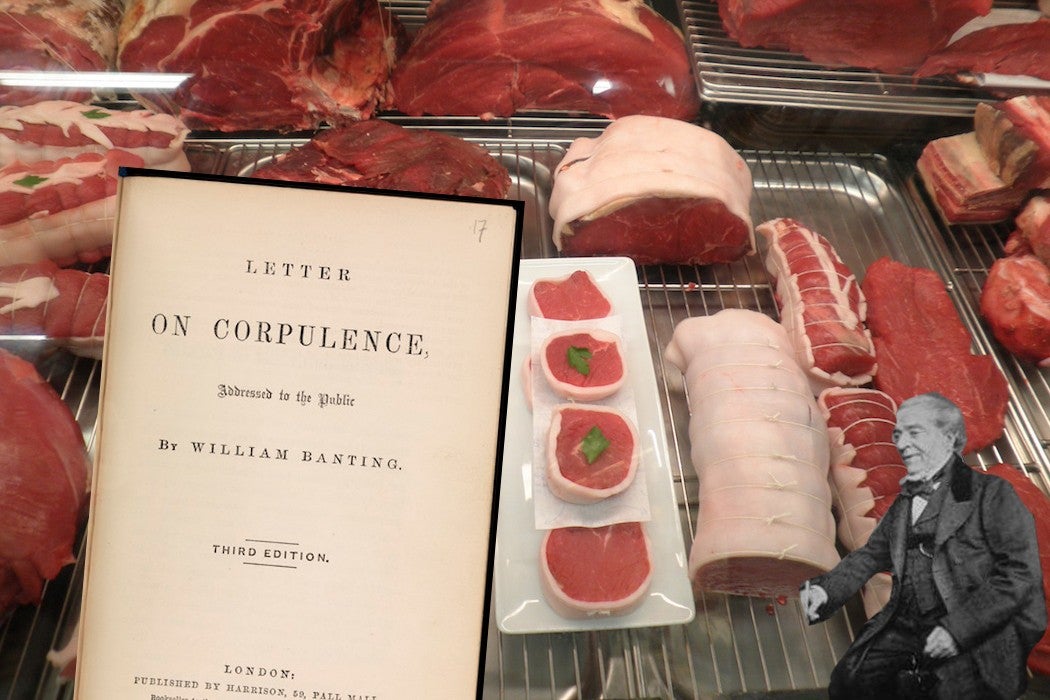It’s New Year’s resolution season, which means it’s time for many of us to try once again to stick to a diet. Today, we tend to assume dieting is mostly for women, but Katharina Vester explains that when Americans first started following diets in the 1860s, it was a masculine pursuit.
The notion of dieting hit the American shores as a British import in the mid-nineteenth century. This was an era of new individualism, when the idealized middle-class man rose through society by virtue of ambition and self-control. Reverend Sylvester Graham, inventor of the graham cracker, was already promoting an austere diet as a way to curb sexual impulses. Now, with more men working in sedentary professional jobs, many worried that their bodies were becoming soft and feminine. Men began looking to lose some weight.

In 1863, a British undertaker named William Banting published a diet book, A Letter on Corpulence, that quickly became popular in the United States. Banting’s Atkins-esque plan called for limiting starchy foods and sweets while consuming plenty of meat and liquor, a diet with a distinctly masculine slant. He also emphasized that the plan was rational and scientifically grounded and did not call for self-denial or sacrifice, which were understood as feminine attitudes in Victorian culture.
Living on meat and liquor was not cheap, but Vester writes that Banting aimed his advice at the striving middle class rather than the wealthy. A slim body achieved through dieting became associated “with eating exquisitely and intentionally avoiding excess, thereby giving testimony to the education, moral fitness, and self-control of the white, urban, middle-class man.”
As diets became a fad for middle-class men, their wives and sisters were understood to have less self-control and no interest in slimming down. One magazine writer insisted in 1865 that women have always “preferred soft outlines” and “have been ashamed of the obtrusiveness of their bones.”
American magazines of the era also tied careful control of one’s diet to white, western superiority. They described some non-western cultures as mentally inferior due to eating fish and grain rather than meat, and others as childishly unrestrained in their eating habits.
While professional and scientific magazines aimed at middle-class white men devoted a great deal of space to dieting throughout the 1890s, the topic was mostly absent from African-American and working-class newspapers, and from women’s magazines.
Vester writes that that, if women received diet advice in these years, it often came from women’s rights advocates. They called for white, middle-class women to seek an uncorseted, “natural,” slim, strong body. This argument contested the notion that leanness and self-control were only for men. At the same time, it set privileged women apart from working-class immigrants, who were stereotyped as overweight and undisciplined.
By the late 1890s, middle-class women had won the ideological battle to be seen as at least potentially capable of the masculine quality of self-control. Women’s magazines began offering advice on weight loss. Of course, it didn’t take long for dieting to transform from an option for women to what feels to many like an obligation.







